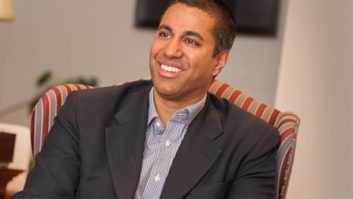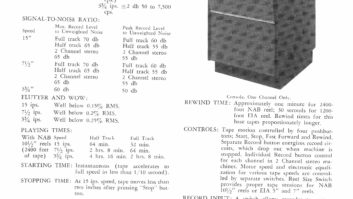It’s not every day that a radio station operator makes it on to “America’s Most Wanted,” a television show profiling criminal fugitives. But Steve Anderson of Somerset, Ky., managed to do just that a decade ago.
I wrote about the story for Monitoring Times and for the Cumbre DX newsletter. With the 10th anniversary of the case approaching, Radio World asked me to recount it.
(click thumbnail)
A newsletter from the Bureau of Alcohol, Tobacco and Firearms showed Anderson in February 2002. Anderson started Kentucky State Militia Radio (KSMR) in March 2001 from his house; the first monitored broadcast transmission of the station was made on March 3 by veteran listener Harold Frodge and cited in Cumbre DX. He had floated the idea of such a station during a militia gathering the previous fall and got a favorable response.
The Kentucky State Militia was one of the most active paramilitary groups in the country at the time, according to the Anti-Defamation League; it conducted military training and hosted national gatherings of militia members. Its members were surprised when the station came on the air so quickly. More importantly, most were shocked to learn that it was an illegal pirate station.
“Most [militia] members thought that this was to be a commercial radio station licensed through the FCC,” said Patrick Perry, a communications officer with the KSM at the time. “Members had no reason to believe that this station would be otherwise.”
Anderson called his program “The Militia Hour.” He only operated for an hour a day on shortwave initially. He later expanded his schedule to a few hours a day. His intended audience was militia members and supporters in Kentucky and beyond.
A licensed radio amateur, AA8DP, Anderson transmitted KSMR in single side band, a mode many shortwave radio sets cannot receive. He said he did this to save wear and tear on the transmitter. KSMR also changed frequency from time to time. Early programs consisted of coded group and militia messages and news.
Radio enthusiasts regularly monitor the shortwave bands searching for new or unusual stations. These enthusiasts use sophisticated receivers and antennas capable of receiving such signals; they regularly communicate with one another via e-mail and newsletters about their catches. Anderson’s station quickly came to their attention as KSMR was heard across the United States.
A few apparently alerted the FCC’s Enforcement Bureau.
Defiance
Anderson was no stranger to the FCC; he’d already had a run-in with the commission over some of his amateur radio activities. The FCC alleged that Anderson had used unauthorized frequencies while operating as AA8DP. According to its records, Anderson ultimately turned in his license in February 2001, though he informed the commission that it had no authority over him, a self-described sovereign citizen. (He wrote, “I do not reside in any territory or possession of the Federal Government of the United States of America and am not subject to any regulation by this fictitious entity.”)
The FCC recorded the KSMR broadcasts and issued warning letters that the transmissions must stop. They did not. KSMR’s slogan was “Your First Amendment Station, Protected by the Second Amendment.” He repeatedly vowed to defend KSMR. Anderson, described as a crack shot, backed up his slogan and vows with a house full of weapons and plenty of ammunition, according to news accounts in the local Somerset Commonwealth Journal and other sources at the time. He continued broadcasting.
Anderson started anti-Semitic rants on KSMR a few days after transmissions started. That was the last straw for the militia group; at the urging of Perry and others, it told Anderson to shut down the station. His solution was simply to change the name of the station to United Patriot Radio (UPR) and stay on the air. The KSM kicked him out of the organization in response.
Following the lead of radio enthusiast publications and their monitoring, other organizations became involved in reporting on Anderson and UPR. The Anti-Defamation League started listening and recording UPR’s transmissions by April of 2001. The Somerset Commonwealth Journal ran a number of pieces and Anderson and his pirate station. It publicized the fact that a little-known radio monitoring group, The Far Right Radio Review, had described Anderson as the “number one hate show on shortwave radio today.”
Anderson responded on UPR by threatening Carol Coffey, the reporter who had written the story. The ADL alerted Coffey of the threat and gave her a tape. Coffey went to the FBI, but they reportedly could not help her. She said that the FCC would not return her calls.
Yet a local sheriff, Sam Catron, did take the threat seriously. Coffey was told to be more careful. “From some law enforcement, I have heard that they were waiting for him to commit a felony,” she told me in 2002.
On the run
Law enforcement got their wish that fall in Middlesboro, Ky.
A deputy sheriff pulled Anderson over for a broken tail light. The sheriff noticed an ammunition clip on the seat and asked Anderson if he had any weapons. Anderson replied that he had several. He then allegedly stepped out of the vehicle and fired at both the deputy and the deputy’s vehicle. Some of the shots hit the vehicle; the deputy was unscathed.
A chase reportedly ensued and Anderson got away. He was now wanted by the Kentucky State Police for attempted murder; and the Bureau of Alcohol, Tobacco and Firearms wanted him for pipe bombs he had.
This, at least, was the end of United Patriot Radio, after seven months. A subsequent search by authorities of his basement radio room found a copper wire cage that prevented interference. Tapes of the shows were on one wall while another displayed the FCC warning letters and press clippings about the station.
Some in the radio enthusiast community were critical of the authorities, especially the FCC, for allowing Anderson to operate in the first place. There were claims that the commission dragged its feet. Yet pirates that defy the FCC can take years to shut down. Anderson not only was defiant, he was armed — and willing to use force, as his subsequent shootout with police proved.
‘Most Wanted’
Anderson managed to elude the authorities for quite some time. Frustrated that he remained on the loose a few months after the shootout, the Somerset Commonwealth Journal prepared a package on him and sent it into “America’s Most Wanted,” the television show that portrays criminal fugitives and asks viewers to call the police if they have any information. The show aired a segment on Anderson.
This did the trick. Police in North Carolina captured Anderson in November 2002 in response to a tip from someone who had seen the show. He was sentenced the following May to 15 years in federal prison.
During his trial, Anderson apologized for his actions and what he had said on the air. According to press reports of the time, he told U.S. District Judge Danny C. Reeves, “My actions were wrong — bad wrong. What I said was very wrong and I apologize for that.”
He remains in prison today. Anderson declined an interview request from this writer 10 years ago, and to my knowledge hasn’t talked to other journalists since.
Hans Johnson has been writing about broadcasting for almost 20 years. He founded Cumbre DX in 1994; he makes his home in Florida.












